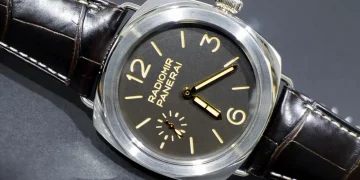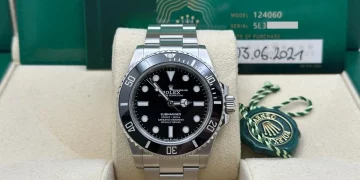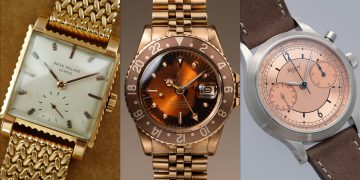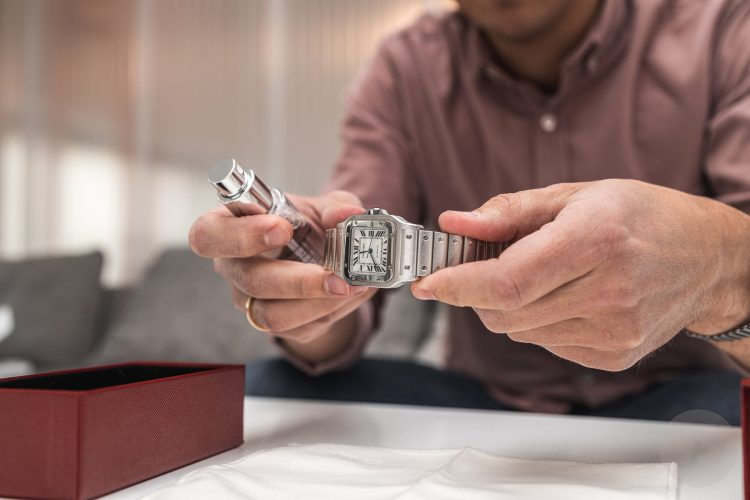Introduction: The Importance of Proper Watch Cleaning
Watches, whether vintage, luxury, or everyday wear, are an investment in time and craftsmanship. Keeping them clean not only preserves their aesthetics but also enhances their longevity and functionality. While most people know the basics of cleaning their watches, few understand the delicate balance between restoring their shine and avoiding potential damage.
Watches are intricate machines, and a lot can go wrong if improper cleaning methods are used. From scratching the case to damaging the delicate seals, there are plenty of ways a cleaning routine can go awry. The good news is that with a few simple techniques, you can clean your watch safely and restore its brilliance without compromising its integrity. In this guide, we’ll explore safe, effective cleaning techniques and highlight common mistakes to avoid.
Why Watch Cleaning Matters
Watches, especially mechanical or automatic ones, are exposed to a variety of environmental factors. Dust, dirt, moisture, and even oils from your skin can accumulate on the watch’s case, bracelet, and movement. Over time, these elements can cause wear and tear, compromising the functionality and appearance of your timepiece. Proper cleaning is not just about aesthetics; it’s about maintaining your watch’s performance and ensuring that it functions as intended.
While it’s important to clean your watch regularly, it’s equally crucial to use the right materials and techniques. Improper cleaning can lead to scratches, degraded water resistance, or even damage to sensitive parts of the movement. Let’s dive into the essential cleaning techniques that will restore your watch’s shine without risking damage.
The Right Tools for the Job
Before diving into the cleaning process, it’s important to gather the right tools. While some people may think that household cleaning products and cloths will suffice, using the wrong materials can result in irreversible damage to your watch. Here’s what you’ll need for safe and effective cleaning:
1. Microfiber Cloth
- Microfiber cloths are soft and non-abrasive, making them perfect for wiping down your watch without scratching the case or bracelet. These cloths are ideal for removing fingerprints, dust, and smudges.
2. Soft Toothbrush
- A soft-bristled toothbrush is perfect for gently scrubbing the nooks and crannies of your watch, such as the bracelet links and the crown. The bristles can effectively remove dirt and grime without damaging delicate parts.
3. Watch Cleaning Solution or Soap
- A gentle watch cleaning solution or mild soap is essential for breaking down oils and dirt on the watch’s surface. Avoid harsh chemicals or abrasive cleaners, as they can damage the watch’s finish or affect its water resistance.
4. Water (and a Soft Bowl)
- Some parts of the watch, especially the bracelet, can be rinsed under lukewarm water to remove dirt. However, not all watches are water-resistant, so always make sure that your watch can handle exposure to moisture.
5. Cotton Swabs
- For detailed areas like the crown, pushers, or lugs, cotton swabs are incredibly helpful for getting into tight spaces and cleaning away dirt without risking damage.
6. Compressed Air or Soft Brush
- For watches with delicate features like textured dials or open-case backs, a gentle blast of compressed air or the use of a soft brush can help remove any dust or particles that are too small for a microfiber cloth to catch.
Step-by-Step Guide to Cleaning Your Watch
Step 1: Remove the Strap or Bracelet (If Possible)
The first step in cleaning your watch is to remove the strap or bracelet, if it’s detachable. This allows you to clean both the strap and the watch case separately, avoiding any damage to the bracelet or unnecessary cleaning of areas that don’t need attention. If your watch has a leather strap, it’s especially important to keep it dry, as moisture can damage the leather over time.
If the bracelet is metal, cleaning it separately ensures you can properly scrub between the links to remove any dirt or grime trapped in small crevices. You can either use a microfiber cloth or soft brush to clean the strap, depending on the material.
Step 2: Clean the Watch Case
The watch case is the part that will typically need the most attention. To clean the case, begin by using a microfiber cloth to wipe down the watch’s surface. Start at the front and back of the watch to remove any fingerprints, dust, or smudges. The microfiber cloth will help lift oils and grime without scratching the case.
Next, use a soft toothbrush and a gentle watch cleaning solution to scrub the case. Be sure to focus on the areas around the crown, pushers, and lugs. For stubborn grime, you can dip the toothbrush in some mild soap diluted with water, but always avoid harsh chemicals that could damage the watch’s finish.

Step 3: Clean the Bracelet or Strap
After you’ve cleaned the watch case, turn your attention to the bracelet or strap. Metal bracelets often accumulate dirt in between the links, so it’s essential to carefully scrub these areas with a soft toothbrush. For stubborn dirt, gently dip the brush into a mixture of mild soap and water. If the bracelet is particularly dirty, you may need to rinse it under lukewarm water before brushing.
If your watch has a leather strap, be careful not to soak it. Instead, use a damp microfiber cloth to gently wipe it down. Afterward, let the strap dry naturally. Never place a leather strap in direct sunlight or use a blow dryer to dry it, as this can cause the material to crack or fade.
Step 4: Dry the Watch and Strap Thoroughly
Once the cleaning process is complete, it’s time to dry the watch and strap. Use a microfiber cloth to gently dry the watch case, bracelet, or strap. Be sure to remove all moisture, especially in small crevices where water can accumulate. For metal bracelets, it’s particularly important to dry thoroughly, as water can seep into the links and cause corrosion if not dried properly.
Step 5: Reassemble and Inspect
Once both the watch and strap are dry, reassemble them if you had removed the strap or bracelet earlier. Take this opportunity to inspect the watch for any missed spots or lingering dirt. If necessary, use a cotton swab or compressed air to clean any hard-to-reach areas.
Common Mistakes to Avoid
While cleaning your watch may seem straightforward, there are a few common mistakes that many people make. Avoid these pitfalls to ensure your watch remains in pristine condition:
1. Using Harsh Chemicals
- Harsh cleaning solutions, such as bleach or ammonia-based products, can damage your watch’s finish and its internal seals. Always opt for a mild watch cleaning solution or diluted soap to protect your watch.
2. Submerging Non-Water-Resistant Watches
- Not all watches are water-resistant. If your watch is not designed to withstand moisture, avoid submerging it in water. Always check the water resistance rating of your watch before exposing it to moisture.
3. Using Abrasive Cloths or Sponges
- Avoid using abrasive cloths or sponges, as they can scratch the surface of your watch. Stick to microfiber cloths, which are soft and non-abrasive, to protect the watch’s finish.
4. Over-Wetting Leather Straps
- Leather straps are highly sensitive to water. Avoid soaking them or getting them too wet, as this can lead to the material breaking down or losing its shape.
5. Over-Tightening Screws or Bolts
- If your watch has screws on the bracelet or case, be careful not to over-tighten them during the reassembly process. Over-tightening can damage threads or create unnecessary stress on delicate parts.
The Benefits of Regular Watch Cleaning
Regular cleaning not only ensures that your watch remains visually appealing, but it also plays a vital role in maintaining its longevity. By removing dirt, grime, and oils that accumulate over time, you help preserve the watch’s finish and prevent wear on the internal components. Additionally, cleaning your watch on a regular basis can help you spot issues before they become serious problems.
Conclusion: Keep Your Watch Shining Without Risk
Cleaning your watch doesn’t have to be a daunting task. By following the right techniques and avoiding common mistakes, you can restore your timepiece’s shine and keep it looking as good as new. Regular maintenance and gentle care will help preserve the watch’s aesthetics and functionality for years to come, ensuring that it continues to serve you well for the long haul.





































